Pre-Owned Rolex Prices Just Keep Falling—Here Are the Best Deals Right Now

With Watches and Wonders as well as the spring auction season behind us, the watch market is calm and steady. And, generally speaking, 2024 is turning out to be a relatively stable year for watches. Prices are down, and supply is up—and that spells “buyer’s market.” This is especially true of pre-owned Rolex.
As collectors, the problem with market-wide predictions and recommendations—and even simple observations—is that individual brands, models and even specific references can be moving in directions at odds with the general market. Back in May I noted that pre-owned Cartier and Breitling had dropped in value during Q1 of this year, and yet the Cartier Panthère rose 19.51 percent, while the Breitling Navitimer went up 18 percent. So, when people ask if it’s a good time to buy a watch, I always answer, “Depends on which watch.” We offer this caveat for Rolex, as well, and will use data to home in on the good deals.
More from Robb Report
8 Famous Musicians Who Collect Watches, From Eric Clapton to Jay-Z
Bryson DeChambeau Won the U.S. Open With a Rolex Submariner 'Bluesy' on His Wrist
The Global Watchmaker Shortage Inspired a Family-Owned N.Y.C. Shop to Open a School
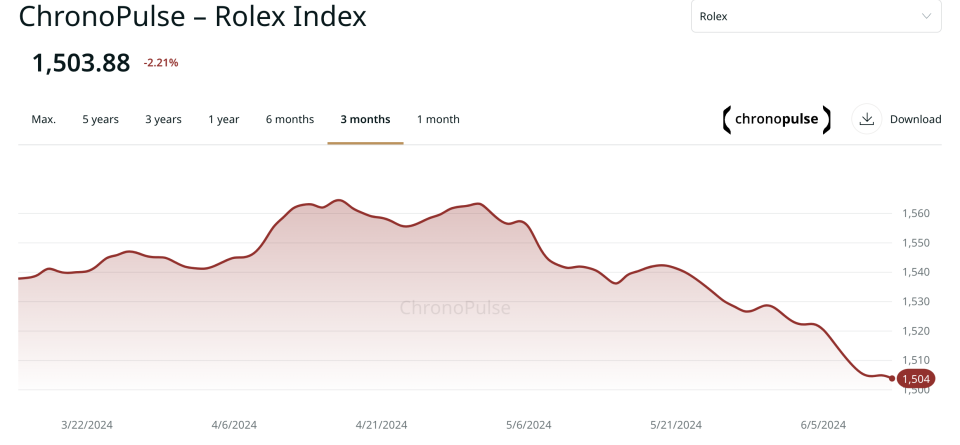
Despite a few notable anomalies (which you’ll find below), right now is an excellent time to buy vintage, neo-vintage and, especially, recent-model pre-owned Rolex sports watches. Though many collectors have noted this anecdotally to each other, we’ve turned to Chrono 24’s ChronoPulse watch market index to gain better insight. Clearly, Rolex is continuing its slow slide downward, with a substantial dip in the past two months.
I spoke with Eric Wind of Wind Vintage to get his feel for the current Rolex market, and he told me that, “People don’t realize they can suddenly go buy a modern Rolex for less than it would cost at retail. There was all this hysteria, and so that surprises people. Especially Subs and Sea-Dwellers, those are way down.”
If you know which references to look for and how to assess condition, you can walk away with a Rolex Submariner, GMT-Master, Explorer II, or Oyster Perpetual 41 for far less than you would have just a couple years ago—in some cases, thousands less. And if you’re thinking of the purchase as an investment, you would do well to consider neo-vintage Rolex right now.
A fair warning from Eric Wind: “Even a very recent Rolex needs to be checked out before you go swimming with it. People assume that because it’s a modern Rolex, it’ll be waterproof, but you need to get it checked out.” His point is well taken, as rubber gaskets can wear out, and you can’t be sure whether the previous owner didn’t overwork the crown, or whether the watch was recently serviced.
With warnings and caveats in place, let’s get into this buyer’s market.
Neo-Vintage and Current Model Subs
The five-digit Submariners (1980-2000s) are very tasty in style due to the aluminum bezel inserts—and if they’re dated before 1984-ish, you’ll get matte dials with painted markers for full-on vintage vibes (post-1983 Subs feature gloss dials with white gold marker surrounds). To get a sense of where the five-digit Subs are headed, ChronoPulse reports that the Submariner reference 16610 (which is post-1984 with glossy dial, gold indices, and caliber 3135) is down by -3.84 percent over three months, with many examples selling well below $10,000. I’ve even seen a few decent examples below $8,000. You can expect to pay more for 16800s with matte dials, however, as they’re more “vintage.”
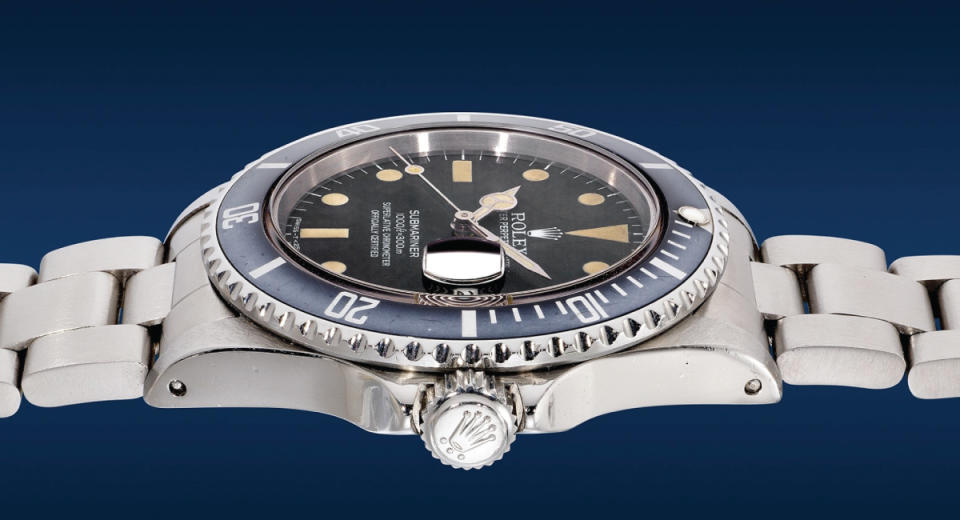
If you’re interested in the modern six-digit references with the Cerachom (ceramic) bezel inserts and updated movements, you’ll be pleased to learn that the Rolex Submariner reference 124060 (the current no-date version released in 2020) is down -6.58 percent over the past year, with a -5.25 percentage drop in the last month alone, according to the ChronoPulse Index. If you want a date complication, the current reference 126610LN is down -4.22 percent. Remarkably, both of these current models can be found right around retail prices plus tax—a common benchmark for used pricing. The 126610 with date can cost right around $13,000 with box and papers as of this writing, and the 124060 no-date model can be had for just over $10,000.
Maybe scoring a sub at retail isn’t quite the great deal is seemed just a few years ago.
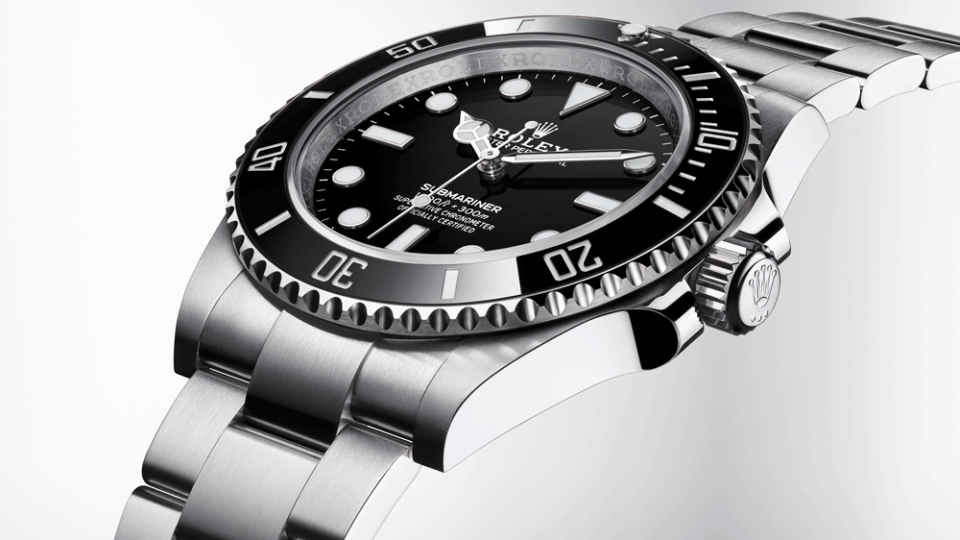
Surprisingly, the all-green “Hulk” reference 116610 of 2010—which was once downright scarce a few years ago—just shot down -3.73 percent over the past 30 days. During the pandemic you’d be paying around $26,000 for a Hulk, but now they’re available for right around $17,000. That’s $9000 down, generally.
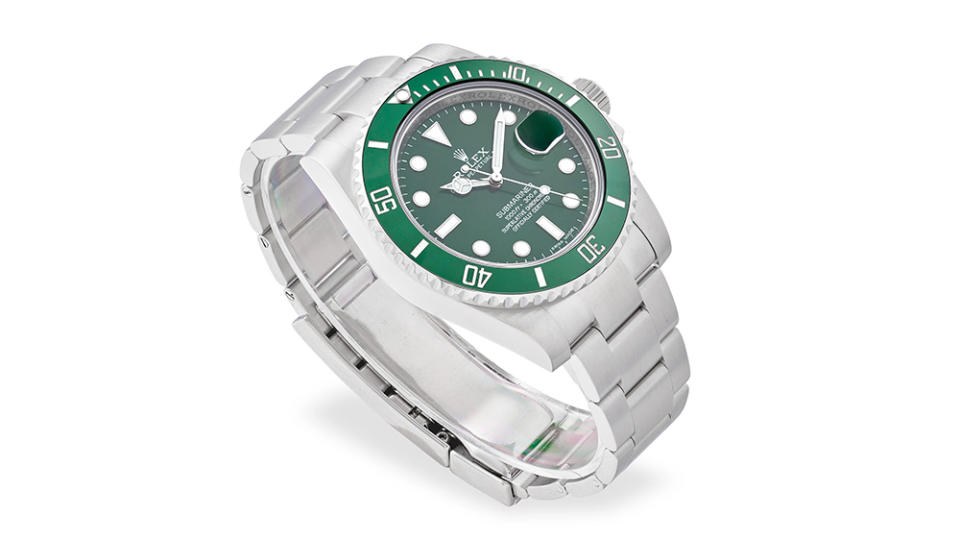
True Vintage Submariners
Though ChronoPulse doesn’t report data on the four-digit references (World War II to ~1979), we’d recommend looking at the revered 1680 Submariner with date, which Rolex produced with “SUBMARINER” written in either red text or white. The revered “Red Sub” always costs more. We’re seeing good looking 1680s with white text down around $14,000, while Red Subs closer to $20,000 and up.
A caveat: Vintage prices tend to operate on their own calculus, as trends (and thus supply), as well as condition, drive that market in less predictable ways. In short, you’ll see a very wide variation in pricing, though the trend is generally down.
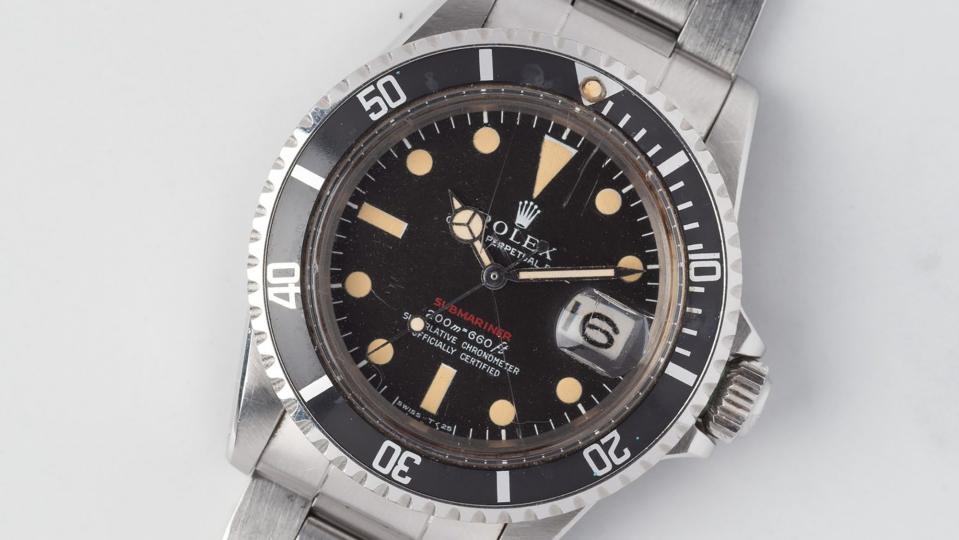
The Five-Digit GMT-Master II Is Looking Reasonable (Again)
It’s basically the same story for GMT-Master II models, but the changes are less drastic. However, discontinued models like the steel reference 126710LN “Pepsi” on Jubilee bracelet is up +3.61% over the last 30 days (and here we see the failure of market-wide generalizations). Still, five-digit reference 16710 Pepsi GMT-Master II models are down by -1.14 percent over the past thirty days, and have come down a full -3.57 percent over the past year. Expect to pay under $10,000 for a nice GMT Master II, and even as low as $9000. That’s way down.
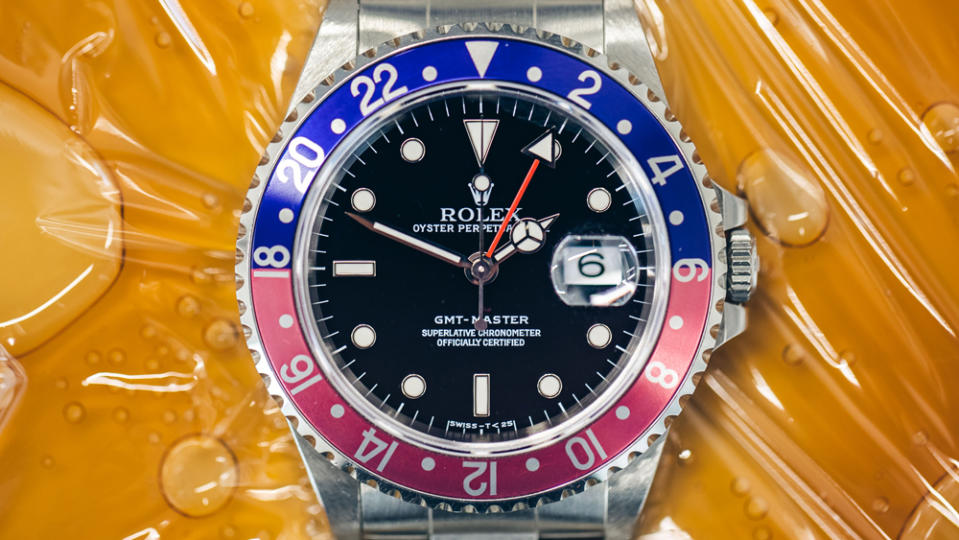
Condition of five-digit GMT-Master II references is especially influential on pricing, as the fading of the bezel insert tends to send some collectors head-over-heals if it’s especially ghosted (sun bleached), while excessive case polishing (which was common in the five-digit era) will drive prices downward. All this to say, there’s a wide range of pricing for GMT-Master II references, but if you’re looking for a very cool watch to wear every day, a relatively clean one can be had under $10,000.
The Explorer II Is Up and Down
If there’s a collector’s Rolex, it is the 40 mm Explorer II 16570, especially with a “polar” (white) dial. These have always been the less desirable GMTs from Rolex, but they’re very popular with watch enthusiasts, partly because they were reasonably priced. As it turns out, the 40 mm 16570 with a black dial is up +3.89 percent over three months (likely due to recent journalism on the 16570, as well as growing demand for smaller watches). Meanwhile the six-digit 42 mm 226570 is down by a full -4.45 precent in the same time period.
You can always expect to pay more for white dials than black ones with Explorer II references, but the prices are really down: Around $8000 for a black dial, and as little as $8500 for a white dial as of this writing. As always, condition, service history and box and papers will be important.
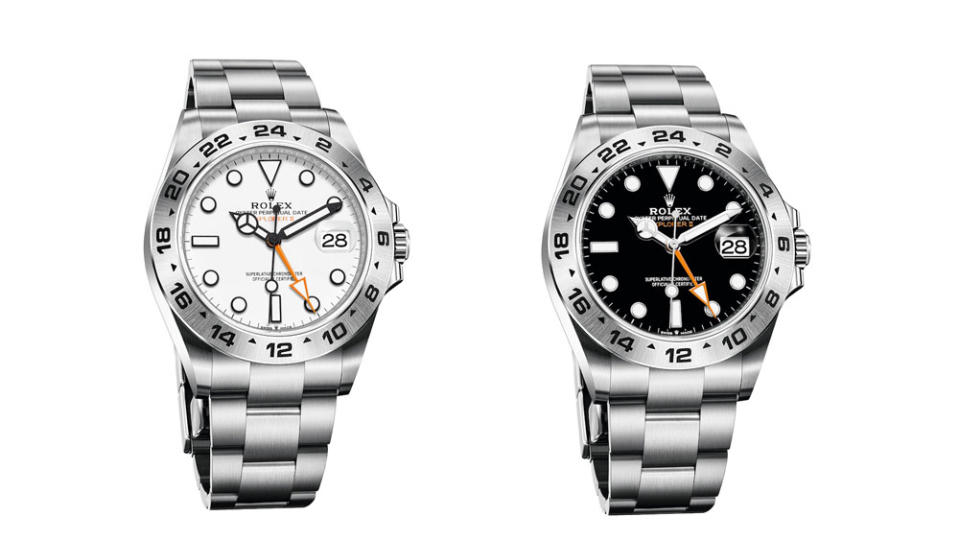
Rolex Oyster Perpetual 41 is Way Down, and Datejusts Keep Going Up
This may come as a shock, but according to ChronoPulse, the Rolex Oyster Perpetual 41 124300 (in various dial colors) is down -20.99 percent. That’s a watch that you could hardly get your hands on during the pandemic, and I would assume that the reason for this is that people are reaching for smaller watches. However, if you’ve ever worn a 41 mm “OP,” you’ll know that they wear quite small due the stout lugs and excellent bracelet integration. You can get one for around $7500 today.
If my theory about size driving the market doesn’t convince you, consider that the Datejust 36 reference 126234 is up by +6.5 percent over three months. The Datejust’s impressive performance may also indicate the growing preference for dressier watches. Based on anecdotal reports from fellow collectors, that assessment feels right. (Note: ChronoPulse doesn’t offer data on the 36 mm Oyster Perpetuals.)
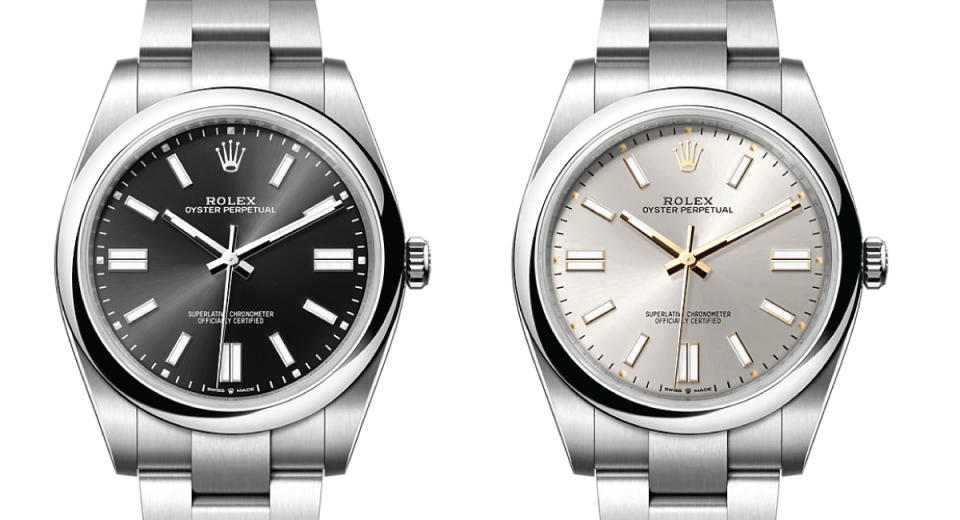
The Daytona, Milgauss, and More
I think the picture I’m painting, supported by data, is relatively clear: This is a Rolex buyer’s market, with some exceptions for specific models.
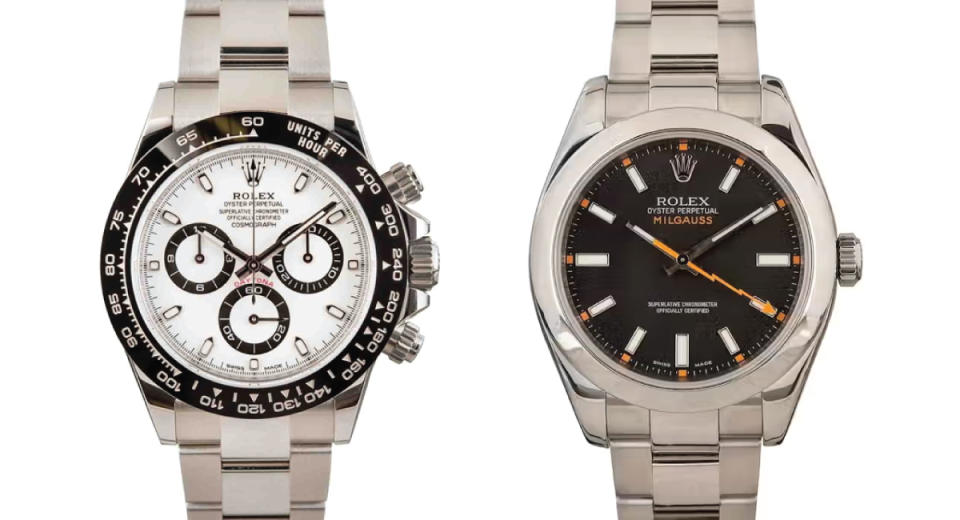
For example, steel Daytonas remain expensive overall (roughly double what you’d pay at retail), and yet the Rolex Daytona 116500LN from 2016 came down -5.27 percent over three months, and even the discontinued Milgauss 116400GV is down a full -7.56 percent in that time. Daytonas and discontinued models going down is a clear sign of the buyer’s market.
As with buying any pre-owned watch: Do your research, find a great example, and take note of whether you’re looking at an anomaly that shot up in price, or if you’re getting a good deal because that model’s price has fallen. You may also want to check out our video offering tips on buying vintage and pre-owned watches.
As always, happy collecting!
Best of Robb Report
Sign up for Robb Report's Newsletter. For the latest news, follow us on Facebook, Twitter, and Instagram.

 Yahoo Finance
Yahoo Finance